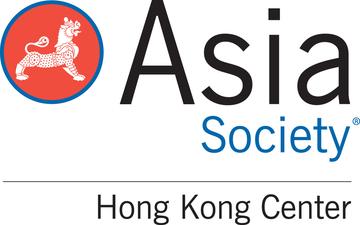Online Book Launch
jointly presented by Asia Society Hong Kong Center and Osage Art Foundation
Osage Art Foundation is proud to announce the launch of the publication “Art in the 21st Century: Reflections and Provocations”, which brings together a group of international thinkers and scholars for an intellectual discourse upon the interdependencies between Art, Science and Technology.
The Augmented Reality public art project, “BeHere,” of media artist Masaki Fujihata in 2018, led to a one-day forum, “HKACT! Act 4 A Forum Act” in January 2019. The forum brought together a small group of international scholars and artists to discuss the significance of digital media. One result was the decision to call for a broad collection of short essays that would reflect on the impact of advanced media in the arts and humanities today.
Rather than attempt a survey of the topic, this slim volume “Art in the 21st century: Reflections and Provocations” invited 15 scholars from various fields of expertise to present some reflections and provocations on salient concerns about art in the 21st century to stimulate discussions on art after the media.
In this online book launch video, editors Siegfried Zielinski and Charles Merewether, and authors Peter Weibel, Anne-Marie Duguet and Hidetaka Ishida, will be introducing the book, together with contributing editor Masaki Fujihata’s reflection on the “BeHere” project.
This publication is generously supported by the Institute of Creativity, Hong Kong Baptist University (Sponsored by Hung Hin Shiu Charitable Foundation 孔憲紹慈善基金贊助) and Academy of Visual Arts, Hong Kong Baptist University.
Contributors Biographies
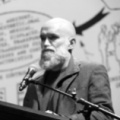
Jamie Allen investigates what technology teaches us about who we are as individuals, cultures and societies. He has been an electronics engineer, a polymer chemist and an exhibition designer. He likes to make things with his head and hands—experiments into the material systems of media, electricity and information as artworks, events and writing. Allen works at the intersection of art, design, ecology, science and technology and is occupied with the creation of prefigurative institutions that are generous and collaborative, acknowledging that friendship, passion, and love are central to knowledge practices like art and research. He is Canada Research Chair in Infrastructure, Media & Communications and Senior Researcher at the Critical Media Lab Basel, Institute of Experimental Design and Media Cultures, FHNW.
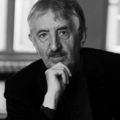
Hans Belting has taught art history at the Universities of Heidelberg and Munich. In 1992, he joined the Karlsruhe University of Arts and Design. In 2003, he held the “European Chair” at the Collège de France in Paris. From 2004 to 2007, he acted as Director of the International Research Center for Cultural Studies (IFK) in Vienna. He is member of a number of international societies and of the Order Pour le Mérite. He received an honorary degree from the Courtauld Institute of Art at London in 2010 and the prestigious Balzan Price 2015. Hans Belting has published numerous books on the History and Theory of Arts, which had been translated into many languages, including Chinese. His last book is on Léopold Sédar Senghor and the Future of Modernity (2018), written together with Andrea Buddensieg.
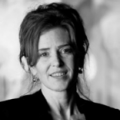
Suzanne Buchan is professor and head of MA Animation at the Royal College of Art London. She has published widely on animation and film, including Pervasive Animation (editor, 2013) and The Quay Brothers: Into a Metaphysical Playroom (2011) and is editor of animation: an interdisciplinary journal (Sage). Her research positions animation as central to contemporary debates in visual culture and as a primary driver of the digital shift and resulting changes in cultural metaphors. She is interested in the evolving relationship between media, creative industries and social change. She is also active as a curator, most recently Animated Wonderworlds, Museum of Design Zurich (2016).
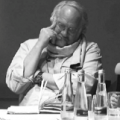
Timothy Druckrey is Director Emeritus of the Graduate Photographic and Electronic Media program at the Maryland Institute, College of Art. He also works as a curator, writer, and editor. He lectures internationally about the social impact of photography, electronic media, the transformation of representation, and communication. He co-curated the exhibition Iterations: The New Image and edited the book published by MIT Press. He edited Electronic Culture: Technology and Visual Representation, co-edited (with Gretchen Bender) Culture on the Brink: Ideologies of Technology (Bay Press) and was Series Editor for Electronic Culture: History, Theory, Practice published by MIT Press. He has been Guest Professor at the University of Applied Art, Vienna (2004) and Richard Koopman Distinguished Chair for the Visual Arts at the University of Hartford (2005).
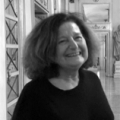
Anne-Marie Duguet is Professor emerita at the University Paris 1 Panthéon-Sorbonne and an art critic. Among her publications are Vidéo, la mémoire au poing (Hachette, 1981), Jean-Christophe Averty (Dis-voir, 1991), Déjouer l’image. Créations électroniques et numériques (Jacqueline Chambon, 2002). She was curator of the exhibitions “Jean-Christophe Averty. Collages, découpages” (Espace Electra, Paris 1991), “Thierry Kuntzel” (Jeu de Paume, Paris, 1993), “Smile Machines” (Akademie der Kunst, Berlin, 2006), “peter campus video ergo sum” (Jeu de Paume, Paris, 2017), and co-curator of the Biennale Artifices (Saint-Denis, 1994 and 1996). Since 1995, she has been the director and editor of the “anarchive” series, digital archives and multimedia projects on contemporary art, with Antoni Muntadas, Michael Snow, Thierry Kuntzel, Jean Otth, Fujiko Nakaya, Masaki Fujihata and Peter Campus (www. anarchive.net). She has received the Media Art Histories Award 2019.
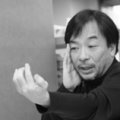
Masaki Fujihata is a pioneer of new media art, renowned in Japan as well as abroad. In the 1980s, he began working with computer graphics, before shifting to work on computer sculptures. In the mid-1990s, Fujihata produced canonical pieces of what would later be called “interactive art”, including the multimedia installation “Beyond Pages” (1995–1997) and the exploration of networking technologies in his “Global Interior Project” (1996). He began his longterm experiments with GPS technology in 1992 with “Impressing Velocity”. His “Voices of Aliveness” (2012) takes a rather uncommon technical tack in gathering data, making for a meticulously composed and unexampled series of cyber-spatial creations that can only be called “the cinema of the future” or “the shape of media to come”. In 2018, he began focussing on AR (augmented reality) technology to reenact human figures from old photographs taken on the streets of Hong Kong in the 1950s and 1960s. His work “BeHere” transforms 3D model data into a smartphone application, which then functions as immaterial public art.
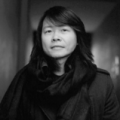
Yuk Hui is Associate Professor at the School of Creative Media of the City University of Hong Kong and Visiting Professor of Philosophy and Technology at the China Academy of Art in Hangzhou. Prior to that, he taught at the Bauhaus University and at the Institute of Philosophy of Leuphana University in Germany. He has published on philosophy and technology in journals such as Research in Phenomenology, Metaphilosophy, Techné, Theory, Culture and Society and Angelaki. He is the author of On the Existence of Digital Objects (University of Minnesota Press 2016), The Question Concerning Technology in China: An Essay in Cosmotechnics (Urbanomic 2017), and Recursivity and Contingency (Rowman and Littlefield International 2019) and forthcoming Art and Cosmotechnics (University of Minnesota Press/E-flux).
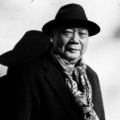
Hidetaka Ishida is Professor emeritus at the University of Tokyo; philosopher semiotician and theorist of Media Studies; docteur en sciences humaines de l’Université de Paris X. He served as Dean of the Graduate School of Interdisciplinary Information Studies at the University of Tokyo. He edited the Japanese translation of Dits et Ecrits de Michel Foucault (10 vol., Tokyo: Chikuma Shobō, 1998–2002) and of Bernard Stiegler La Technique et le Temps (3 vol., Tokyo: Hosei University Press, 2009–2013). His works in Japanese include, The Knowledge of Sign / The Knowledge of Media (Tokyo: University of Tokyo Press, 2003), Contemporary Philosophy (Tokyo: Chikuma Shobō, 2010), Media Theory for Adults (Tokyo: Chikuma Shobō, 2016), The New Semiotics (with Hiroki Azuma, Genron Publisher, 2019).
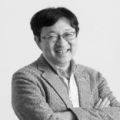
Hiroaki Kitano is the President and CEO of Sony Computer Science Laboratories. Additionally, he serves as the head of the non-profit private research Systems Biology Institute, as Group Director of the Laboratory for Disease Systems Modeling at and RIKEN Center for Integrative Medical Sciences in Yokohama, and as the head of the Japanese-government funded Kitano Symbiotic Systems project. He is a professor at Okinawa Institute of Science and Technology. He lead development of the Sony AIBO series of robotic pets and is the founder of the robotic world cup tournament known as Robocup. Dr. Kitano is an expert in the fields of artificial intelligence and bioinformatics, and is a leading figure in the emerging field of gene network modeling.
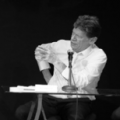
Scott Lash was a visiting professor at the School of Creative Media at the City University of Hong Kong. From 1998 – 2017, he was Director and Research Director of the Centre for Cultural Studies at Goldsmiths, University of London. From 2015 – 2018, he was visiting professor of Department Journalism and Communications at Chinese University of Hong Kong. He was Senior Research Associate of Centre on Migration Policy and Society and Institute of Social and Cultural anthropology at Oxford University, and has been editor of the journal Theory, Culture and Society since 1987.
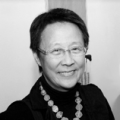
Agnes Lin is the Founder and Director of the Osage Art Foundation. Founded in Hong Kong in 2005, the Osage Art Foundation is an international not-for-profit philanthropic organization devoted to building creative communities and promoting cultural cooperation. The foundation aims to bring to the art world new voices, new vision and new ideas; to present art that spurs the imagination; to present work that addresses local issues, national concerns, and universal themes and work that celebrates diversity and difference. The foundation raises funds and supports a range of programs that help young people come to a better understanding and appreciation of art and help improve relations between people of different cultures. Through its activities, the foundation aims to increase community participation in the arts through education and better access and understanding in order to help shape a future in which the arts play a vital role in everyday life.

Charles Merewether was born in Edinburgh, and received his BA (literature) and PhD in art history at the University of Sydney. He taught European modernism at University of Sydney (1981-84), Universidad Iberoeramericana, Mexico City (1986-88), and Universidad Autonoma in Barcelona. He received a research fellowship from Yale University (1991), was Inaugural Curator for the Museo de Arte Contemporaneo de Monterrey, Mexico, (1991-1994), Curator at the Research Institute, Getty Center, Los Angles (1994-2003) and taught at the University of Southern California. He was Artistic Director of the Sydney Biennale (2004-2006), Deputy Director of the Cultural District, Saadiyat Island, Abu Dhabi (2007), Director of the Institute of Contemporary Arts, Singapore, (2010-2013), Visiting Professor at Nanyang Technological University, Singapore (2014) and Hong Kong Baptist University (2015). He was Curator of Contemporary Art, National Art Museum in Tbilisi, Georgia (2016-2018). His books include State of play (2017), After memory: the art of Milenko Prvacki and Under construction: Ai Weiwei (2008). He was co-editor of After the event (2010), editor of both Art, anti-art, nonart: experimentations in the public sphere in postwar Japan 1950-1970, (2007) and The archive (2006). He is currently working on a book on contemporary East European art, and a book on the modern history of cultural looting to be published by Reaktion Books (London).
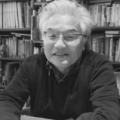
Kenjiro Okazaki (b. 1955) is a Japanese visual artist whose works span over several genres, including painting, sculpture, as well as landscape and architecture. Many of his works has been featured in public collections throughout Japan and in various exhibitions around the world. In 2002, Okazaki was selected of the director of the Japanese pavilion of the International Architecture Exhibition in Venice Biennale. His works include a collaborative performance ‘I Love my Robot’ with the choreographer Trisha Brown, premiered in early 2007. He received Smithsonian Artist Research Fellowship at Hirshhorn Museum and Sculpture Garden (HMSG) in 2014. Okazaki is also extremely active as a theoretician and critic, and is the author or co-author of several books, including Renaissance: Condition of Experience (Bunshun Gakugei Library, 2015) featuring his analysis of Filippo Brunelleschi, and Abstract Art as Impact: The Concrete Genealogy of Abstract Art (Akishobo, 2018) received the Minister of Education Award for Fine Arts in 2019.
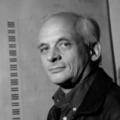
Andrey Smirnov is an interdisciplinary artist, independent curator, collector and writer. He is the founder of the Theremin Center, a research fellow at the Centre for Electroacoustic Music at Moscow State Conservatory, the head of the Rodchenko Sound Lab and a lecturer at the Rodchenko Art School in Moscow. He teaches history and the aesthetics of electro-acoustic music, composition and new musical interfaces. His main ongoing project is focused on restoring the censored history of artistically utopian early 20th century Russia. He is the author of the book Sound In Z: Experiments In Sound and Electronic Music in Early 20th Century Russia (Cologne: Walther Koenig & London: Sound and Music, 2013).
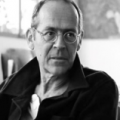
Bernard Stiegler is the director of the Institut de recherche et d’innovation at the Centre Pompidou, Paris, and a founder of the association Ars Industrialis. He obtained his thesis at the École des haute études en sciences sociales in 1992 under the supervision of Jacques Derrida, and since then has published over thirty books, and taught at many universities around the world, including many years at the Université de technologie de Compiègne, as well as at Goldsmiths, University of London, Northwestern University, the Humboldt University of Berlin and Nanjing University, among others. In 1987 he curated the exhibition “Mémoires du futur” at the Pompidou, and he has also been deputy director of the French Institut National de l’Audiovisuel (INA), director of the musical research institute Ircam and director of the Cultural Development Department at the Pompidou. His most recent work is Qu’appelle-t-on Panser? 1. L’immense régression (Les Liens qui Libèrent, 2018) and his most recent work translated into English is The Age of Disruption: Technology and Madness in Computational Capitalism (Polity, 2019).

Peter Weibel is an Austrian artist, curator and media theorist. He is artistic-scientific director and CEO of ZKM | Center for Art and Media Karlsruhe and director of the Peter Weibel Research Institute for Digital Cultures at the University of Applied Arts Vienna. He was professor of Media Theory at the University of Applied Arts Vienna (1984–2011), head of the Digital Arts Laboratory at the Media Department of the State University of New York at Buffalo (1984–1989) and founding director of the Institute of New Media at the Städelschule in Frankfurt/Main (1989–1994). As artistic director, he was in charge of Ars Electronica in Linz (1986–1995), the Seville Biennial (BIACS3, 2008) and the Moscow Biennale of Contemporary Art (2011). He commissioned the Austrian pavilions at the Venice Biennale (1993–1999) and was chief curator of the Neue Galerie Graz (1993–1998). Peter Weibel has published world wide numerous books, catalogues and essays on arts and media.
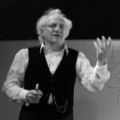
Siegfried Zielinski is the Michel Foucault Chair at The European Graduate School / EGS, where he teaches as a professor of media archaeology and technoculture. He was the chair emeritus of media theory, with a focus on archaeology and variantology of media at the Berlin University of Arts, honorary professor for art and media at the Budapest University of Arts, and works as curator at the Karlsruhe Center for Art and Media (ZKM). From 1993-2000 he was the founding rector of the Cologne Academy of Media Arts. Most recently he was rector of the Karlsruhe University of Arts & Design. Zielinski published numerous books and essays, mainly on archaeology and variantology of the arts and media and curated recently large scale exhibitions als thinking parcours at the ZKM Karlsruhe (mainly with Peter Weibel).
About Osage Art Foundation
Osage Art Foundation was established in 2005 with three main goals –fostering Creative Communities, promoting Cultural Co-operation and building Creative Capacity and has since played an active role in developing education and training of young people, broadening cultural awareness and participation in artistic endeavours, nurturing creativity and critical thinking and fostering international cultural exchange.
The Osage Art Foundation is now well known and recognized by the local community and internationally as having initiated many pioneering projects of international calibre.
The current focus of the Osage Art Foundation is on developing deeper discourse in and around the arts in the wider community. We believe that research, analysis, examination and promulgation of issues pertaining to society, contemporary culture and value by artists, writers, critics, curators and commentators will build better understanding of regional perspectives throughout Asia and beyond.
About HKACT!
In 2015 the Osage Art Foundation began developing HKACT!, a major platform for the promotion of Art Culture and Technological Innovation in Hong Kong.
HKACT! celebrates art and ideas by bringing together visionary thinkers and innovators to help chart the future of a better society through a series of ground-breaking, cutting edge, innovative, technological art and cultural projects.
HKACT! aims to:
- Articulate a Vision for the Future
- Fuel the Growth of the Creative and Cultural Industries
- Be a Catalyst for Thought Leadership
- Explore Alternative Education Methodology
Jointly presented with
